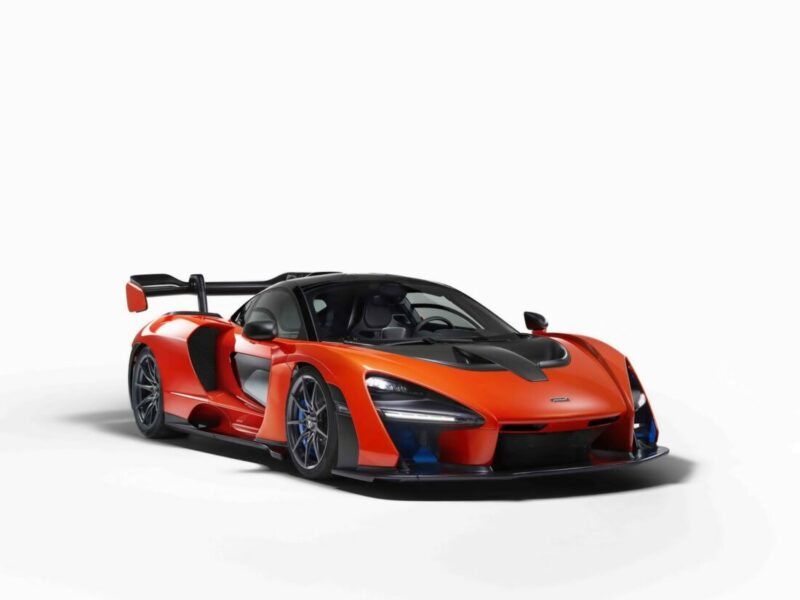
A name is worth 800 words: McLaren Senna
As you marvel at the haphazardly rough shapes of McLarn's latest Ultimate (models designed primarily or solely for fun on the racetrack), first think that it will suddenly morph into some form of deadly transforming robot with so many aerodynamic elements on its body. ... So this one doesn't have the clean lines found on cars like the McLarna 720S and P1. At the same time, it is believed that designers have inadvertently spawned a fragmented design language in their pursuit of organic forms, with which they tried to give the car absolute characteristics. There is not a single line on the body that is not interrupted by the air intake. Thus, it is clear that when designing a car, the designers sought the best performance, not beauty.
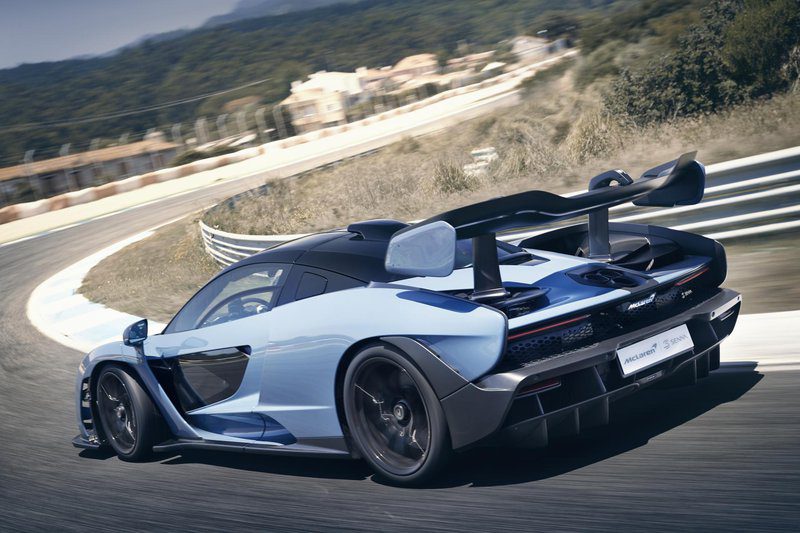
The British brand was the first to make a Formula 1 single-seater car out of carbon fiber (MP4 / 1 from 1981), as well as the first road car (F1 from 1990) entirely from this lightweight material. Since then, McLaren has used this type of design on all road cars. Senna is the simplest so far. It weighs just 1.198 kg, which is 200 kg less than the P1 hypersport car (the hybrid system is heavy) and 85 kg less than the 720S, which can also be attributed to the savings on multiple components and the almost bare interior.

McLaren Senna is not fooling anyone by saying that the car is designed for everyday use. It is a purebred racing car, for which McLarne was able to register for road use only after considerable effort and negotiation. To make it clear, just look at the giant double fender in the back, even if it doesn't extend beyond the rear edge of the car.
When you get close to Senna, everything works scary (beginning with the aforementioned malevolent glare) - and even before he budges. Of course, despite the opportunity to launch it after the legendary Estoril, we will not miss it. In the end, all 500 planned copies were sold out (approximately one million euros per car) even before the first press releases were published. This can only mean that wealthy buyers were really looking forward to getting their hands on their new "baby". And after the first launch, we can assure you that they had a really good reason for this.
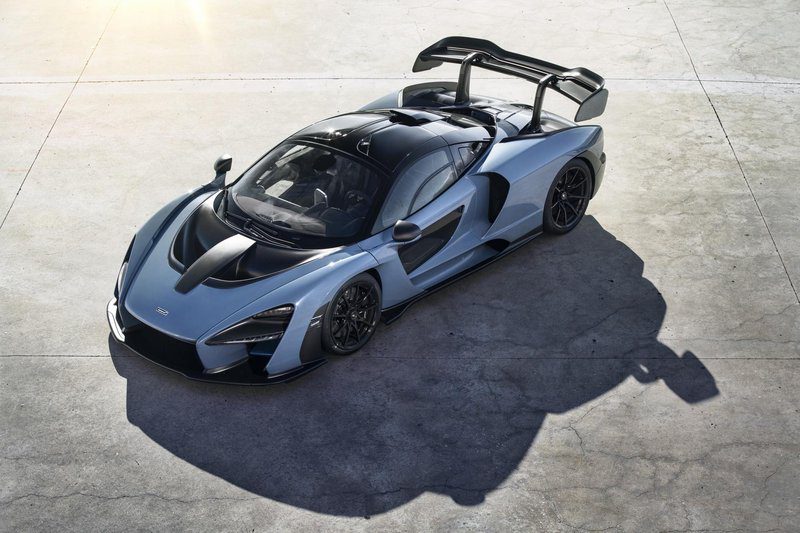
When we climb in through the upward-opening door, appropriately dressed in racing suits, gloves and helmet, our pulse quickens. The task is easier than some competitors, as the door, which weighs only nine kilograms, half the size of a McLaren P1 door, also lifts most of the roof during the opening process. The spacecraft's cockpit is dominated by visible carbon fiber and Alcantara and is built around the most durable monocoque McLarn has ever built, called the Monocage III. The cockpit also differs in that it has been cleared of everything that is not needed to achieve the best driving dynamics and high speeds. The front view is good, which is normal for McLarne, much better than the side view, where it is limited by clear plastic in the door, which can be replaced with glass (but heavier) glass panes at will. The rear view is even worse due to structural reinforcements in the rear of the cab and a giant hydraulically controlled carbon fiber rear wing that weighs just five kilograms but can withstand aerodynamic pressures a hundred times its weight.
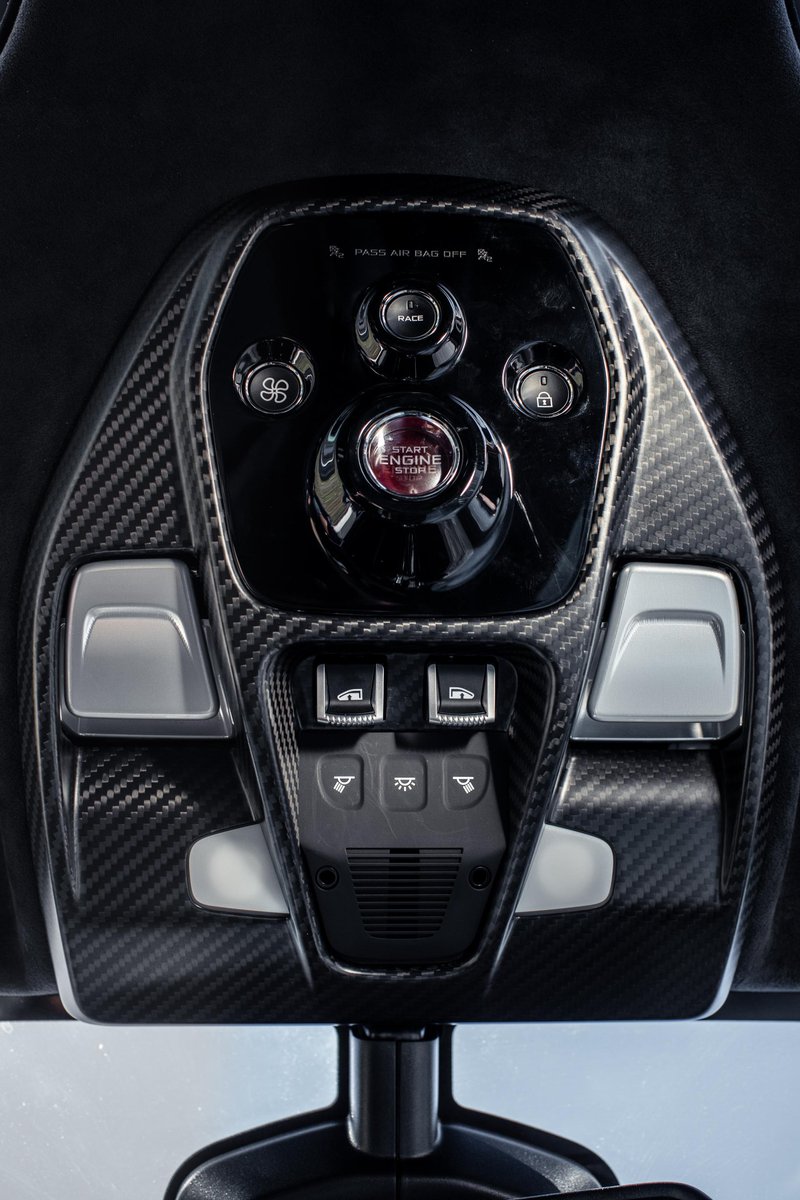
Once the driver finds the engine start button mounted above the windshield to restrict the controls in front of the drivers as much as possible to those strictly necessary to control the movement of the car, it's time to start 15 very fast minutes of life, which can be very close to being what Pink Floyds once called "instant loss of mind." Behind the driver is a turbocharged four-liter petrol V8 with a maximum output of 597 kilowatts or about 800 "horsepower" and a torque of 800 Newton meters, which aerodynamic equipment next to the car, above and below, should help overcome the tires on the asphalt. The aerodynamic pressure reaches (again) 800 kilograms at 250 kilometers per hour when the car is in Race mode. If it weren't for the connection between the car and the legendary racer from whom (in search of the title of the best road (barely) legal race car in the world) McLaren borrowed its name, Senna would certainly have been called McLaren. 800S.
This aerodynamic result is 40 percent higher than the McLaren P1 (again in Race mode). The inclination of the wing can be changed by the driver (with the help of a computer, of course) by 0,3 degrees depending on the speed in 0,7–25 seconds and on the position of the DRS (Drag Reduction System - a system for reducing aerodynamic drag, as in Formula 1) at the most open position moves to a position where it provides the vehicle with the most aerodynamic grip. Other key aerodynamic elements are active front fenders and a twin rear diffuser (both carbon fiber, of course) that create a vacuum under the car. As with the McLarn P1, one of the main technical strengths of the Senna is the hydraulic suspension (where the hydraulic circuit replaces conventional steel springs but retains smaller classic springs to ensure minimal suspension) that works with aerodynamics. When the driver selects Race mode, the car lowers four centimeters in front and three centimeters in the rear, giving the body a lean in favor of optimal aerodynamics. The suspension is much stiffer, the steering wheel is much more responsive and the accelerator pedal is delicately precise so that the driver can get the right dose of power and torque at any given moment. It is important that we explain in more detail what happens in Race mode, since we can only use it during those 15 minutes of driving at the Estoril race track.

The first few hundred meters convince us that the cockpit is virtually devoid of the sound-absorbing materials that we know from other McLarn road cars and others almost as rough as the latest Ford GT, and that the car transmits information from the tarmac with amazing precision. It would be interesting to test how the chassis performs on public roads, but even with a less radical driving profile, we have no doubt that the Senna will go down in history as the most uncomfortable McLaren road vehicle ever built.
The tires had warmed up a bit in the meantime, and we got permission from an experienced co-driver (a former professional racer) to increase speed when the car seemed less aggressive than we expected. But as the speed increases, you feel that the shape of the body (or… the shape) makes the air move where the engineers also want it to move. But traction gain is always progressive, with no sharp rises or falls, in a kind of predictable crescendo that rhymes with speed. The apparent almost complete lack of inertia (due to low mass) at the same time adds a sense of urgency to any acceleration, deceleration or change of direction. There is no doubt that the more power / less weight / more aerodynamic grip formula delivers the desired results. And that's with the best power steering McLaren has ever had, exclusive-designed Pirelli Trophy tires with a new rubber compound that McLarn says increases lateral acceleration by 0,2-0,3 Gs, and a braking system. with special carbon. ceramic coils. According to Andrew Palmer (Director of Development for the Ultimate Series), they can operate at temperatures that are 20 percent cooler than usual - 150 degrees, making them smaller and at the same time 60 percent more efficient than they are. .. is still used at McLarn today. And the numbers back it up: Senna comes to a complete 100 kph stop in just 200 meters, so he manages to do it 16 meters earlier than the McLaren P1 (yes, this is partly due to the P1 hypersport's greater mass). .
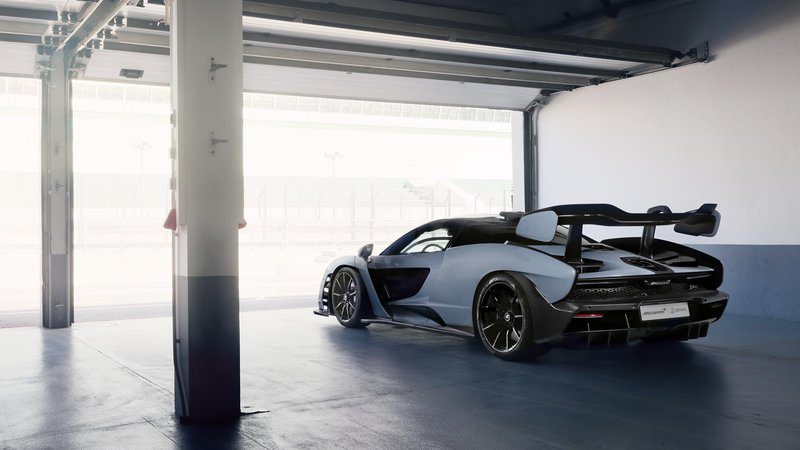
Numbers? They may not tell the whole story, but they can be very helpful in understanding. The same longitudinally centered four-liter twin-turbo V8 engine used by McLaren in various configurations (in this case, it develops 63 "horsepower" and 80 Nm more than the McLaren P1), provides the aforementioned combination of 800 x 2 "horsepower. forces "and Newton meters). With the help of a very fast (but perhaps not too brutal for riders who have to drive this car), a seven-speed dual-clutch transmission sends it to all four wheels. At the same time, it demonstrates amazing performance: 2,8 seconds to 100 kilometers per hour from a standstill, 6,8 seconds to 200 kilometers per hour, 17,5 seconds to 300 kilometers per hour and a top speed of 340 kilometers per hour.
But considering that I've been lucky enough to test cars like the Bugatti Chiron, Porsche 911 GT2 RS, or even a Formula 1 car, the numbers aren't the ones that impressed me the most about the McLaren Senna, however. it is physically difficult to manage such high longitudinal and lateral forces. In this case, you will be amazed at the ease with which the car drives at a racing pace, with exceptional stability, grip and precision, up to a level that is difficult for even a brain with serious experience of driving test supercars on treadmills to digest. They can hardly be reprogrammed without missing the braking point before entering a corner or continuing to top speed, since the "chip replacement" in the human brain simply cannot happen that quickly. The reverse is also true: initially, the car nearly stopped several times before entering a corner, due to the premature use of high-performance brakes (aided by aerodynamics). A little embarrassing, of course, although my ego forgave me for this, especially given the short duration of this session without regard to time.

At the end of this unique experience behind the wheel of an unrivaled racing car that is allowed to appear on public roads from time to time, I can assure you that the new McLaren is faster, more agile and fearless than the person behind the wheel who has enough common sense. Realizing a car in skillful hands is limited only by the sky. The very sky where Ayrton Senna is probably proud of this tribute to his supernatural driving skills.
Star Race in Cockpit
The racing seats can be moved forward and backward with sliding arms underneath, and the driver module for shifting the seven-speed dual-clutch transmission can also be moved with the driver's seat. The pedals are fixed, thick, and the Alcantara-wrapped steering wheel is non-distracting (with manual shift levers behind it) and is height-adjustable so you can easily find the most comfortable seating position. Drivers are also surrounded by two high-resolution screens that display tools and an interface for the infotainment system with very simple graphics to keep the driver's focus on his driving duties. The dashboard can be rotated around its axis so that it turns into a minimalistic line that shows the driver only important data and takes up less space. The slim carbon fiber racing seats are very lightweight, each weighing just 3,5 kilograms and fully encompassing the driver and front passenger's bodies, which are additionally protected by a six-point racing harness. There is no air conditioning, but you can get one at no extra cost, just like the Bowers & Wilkins audio system. Given that the first Senna had only two air conditioners, it is clear what the preferences of the new owners are. The racing atmosphere in the cabin is finally confirmed by the powerful beverage system, which keeps the driver hydrated on long journeys on the race track.

How does hydraulic suspension work
Stiff mechanical coil springs have been replaced on the Senna with a hydraulic circuit. There are small, light and relatively soft springs, but only for a basic level of control. The system, which is connected to a manifold on both axles, acts as a third spring in the middle of each pair of wheels. When only one wheel is loaded, the reservoir is only filled with hydraulic fluid from one side, which prevents the effect of destabilizing the vehicle. When cornering, the reservoir does not fill up as the hydraulic fluid flows freely through the axle without affecting the lean. However, when both wheels are loaded on the same axle at the same time due to traction to the ground or longitudinal accelerations or decelerations, fluid flows from both sides into the manifold where it encounters resistance and thus reduces lift or sink. body. During braking, this process is designed to stabilize and prevent the front axle from settling, thereby reducing forward lean and providing better traction to the rear wheels. The reverse process occurs at the rear when accelerating - the system does not allow him to sit in the back and makes sure that the front wheels do not try to break away from the asphalt. The same effects can be achieved by mechanical means, but the hydraulic system has two other advantages: variable vehicle distance from the ground and variable suspension stiffness.

Senna's ride on the Estoril racetrack is in line with the car as the Brazilian driver first won Formula 1985 in Year 1 on the racetrack. The numbers speak for themselves: Senna was just three seconds slower than the GT3 riders in the last race on this track. on the race track, it also has significantly better acceleration, braking, deceleration and speed than the impressive McLarna P1 and 720S.
+6 km / h at the end of the finish line relative to the McLaren 720S
Aircraft braking is 13 meters later than the 720S and 29 meters later than the McLaren P1.
Turn 5: +10 km / h (+ 0,12 G) like McLaren 720S
Turn 13: + 8 km / h (+ 0,19 G) for 720S and + 5 km / h for P1
